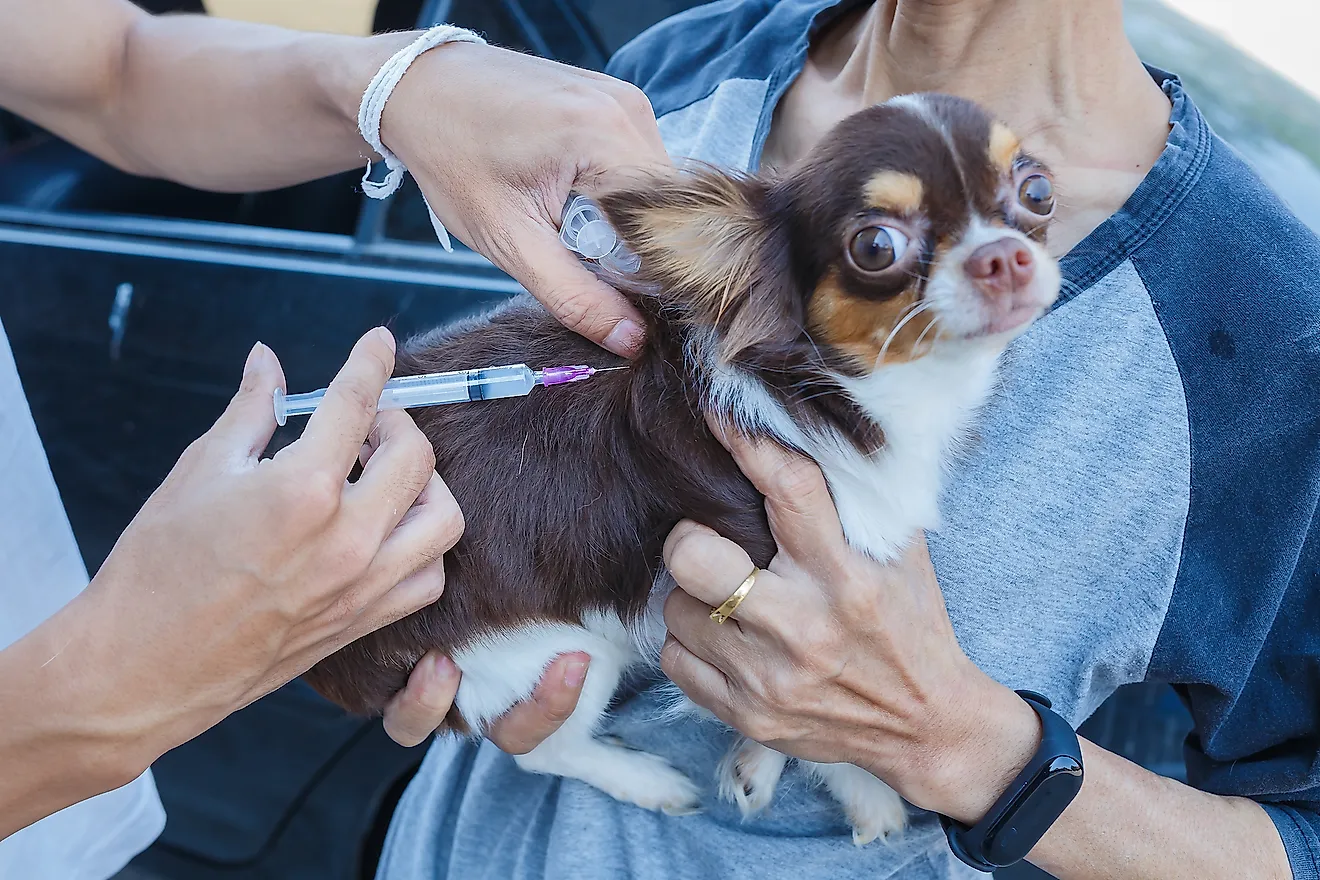How Many People Are Killed By Rabies In The US?

- Most cases of rabies in humans come from infected dogs.
- The vast majority of rabies cases are now found in India and Asia.
- A rabies vaccine only works if it is administered before any symptoms of infection appear.
Rabies is a viral disease caused by the rabies virus that is transmitted to humans from the saliva of infected animals. It is deadly and it is vaccine-preventable, but it has no known cure once the infection sets in.
Many people are bitten each year by rabies virus-infected (rabid) animals throughout the world, and it is estimated that about 59,000 people die of the infection each year. The good news is, if you reside in the US, your chances of dying from this virus are very low. At present, only about two people die annually from rabies in the United States.
Why is this zootonic virus considered to be so dangerous then, and how can you protect yourself? The answers to these questions lie in where you live, what a person does for work, and the power of vaccines.
Why Rabies Is Dangerous?

Rabies kills 100% of the people who contract it and who do not receive the rabies vaccine following their contact (bites, scratches, other ways of contact with saliva) with a rabid animal.
Where can you get rabies? Sadly, cases are highest in rural India and in parts of Asia, where some people cannot afford a rabies vaccine, and may be far from medical assistance.
According to the World Health Organization (WHO), unvaccinated dogs are the main source of the virus in humans. Man’s best friend accounts for 99% of all rabies transmissions to humans. Unfortunately, 40% of people bitten by any rabid animal worldwide are children.
Rabies works by causing an initial fever with pain at the site of the wound, if there is one. There may be a burning sensation and strange tingling as well, among other symptoms. The virus becomes fatal once it spreads to the body’s central nervous system. There it causes inflammation of the brain and spinal cord, and this is what kills its victims.
According to the Mayo Clinic, rabies can affect dogs, cats, cows, goats, horses, bats, ferrets, coyotes, beavers, monkeys, foxes, skunks, raccoons, and woodchucks. Theoretically, rabies can also be transmitted from one person to another through infected saliva, but this is extremely rare. People who work with animals, such as veterinarians, receive a preventive rabies vaccine, as they have higher chances of contracting the illness.
How can you protect yourself if you do not work with animals? It is important that you have your pets such as dogs, cats and ferrets, vaccinated against rabies. Small pets such as guinea pigs can not receive a vaccine, and as such, they should always be kept in cages when outdoors.
A Vaccine

There is another way to ensure you never die of rabies. There is a vaccine humans can take that protects you against the virus. It is not administered in most medical programs around the world simply because rabies immunoglobin is so expensive.
Depending on where you live, it could be unlikely that you will ever be bitten by a rabid animal, (one that is infected with rabies), and so governments and medical officials often view the vaccine as being low-need for the general public. This coupled with the expense means most people have not been inoculated.
Some people do need a rabies vaccine, however. If you are bitten by an animal, or if you are around creatures like bats who may have infected you by drooling their saliva into your environment, you should most definitely go straight to a doctor for a rabies shot. Do not wait for symptoms to arise. This is of paramount importance. The tragic thing is, doctors are not able to detect a rabies infection in a person before the onset of the disease. It is during this time period, however, that the vaccine needs to be taken in order to be effective. Once someone starts to show symptoms of a rabies infection such as a fever, the virus has already won. This person will die.
Rabies has an incubation period that can vary widely. Some people show symptoms of infection just one week after being exposed to the virus. In others, the virus can incubate for up to a year. Typically, the incubation period is about two to three months.
Always visit a doctor if you have been bitten by a wild animal, and seek help.











